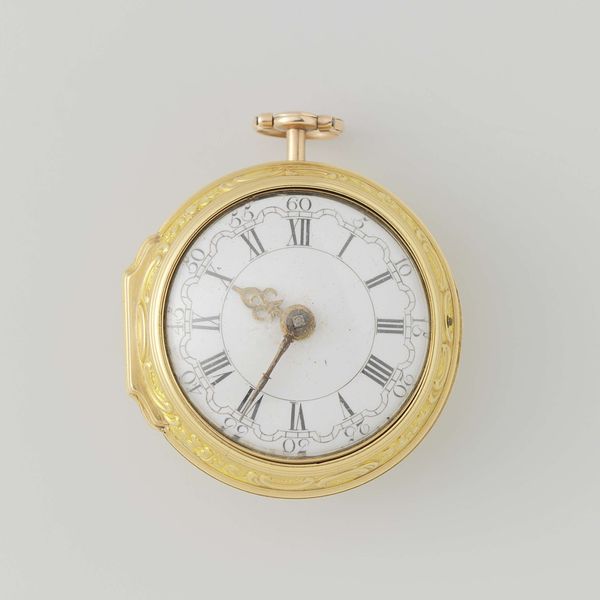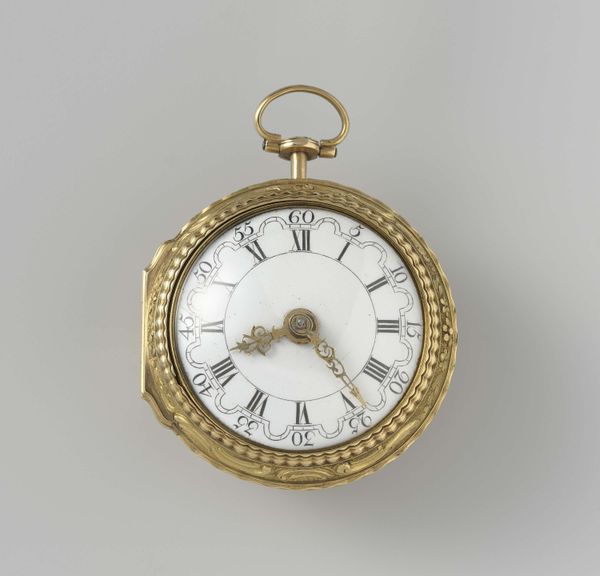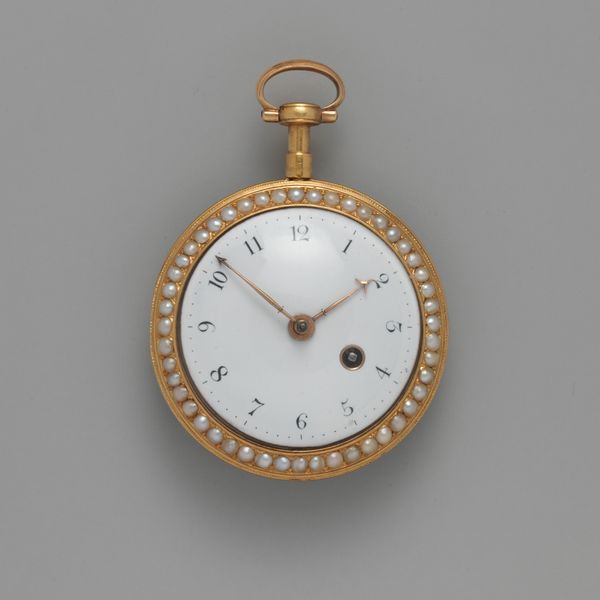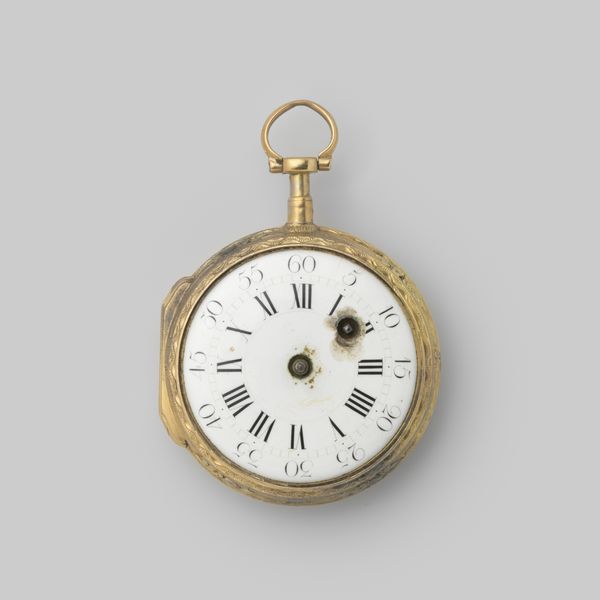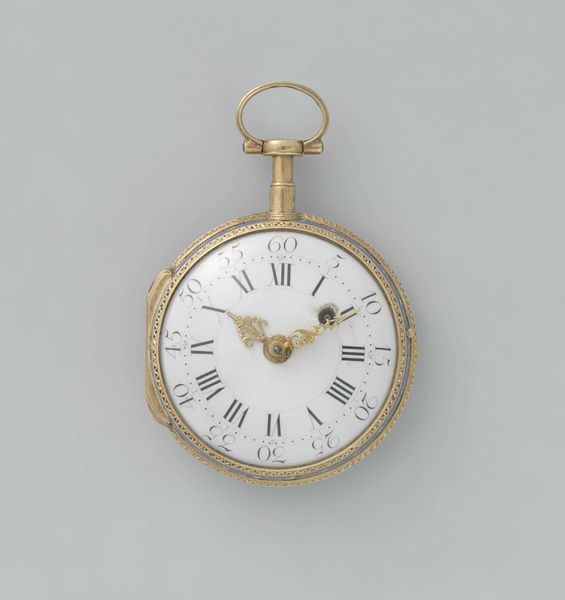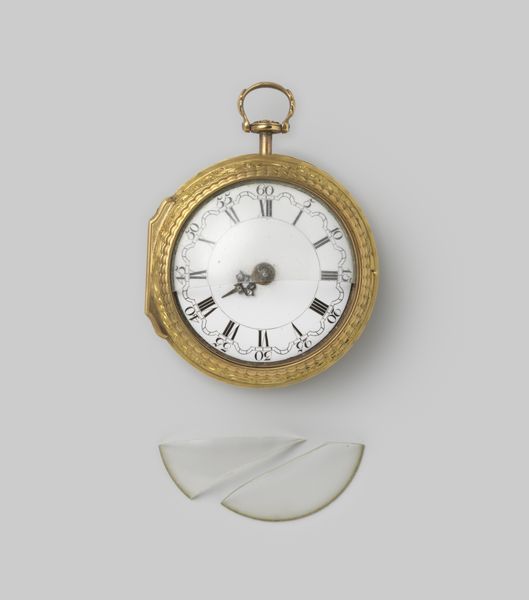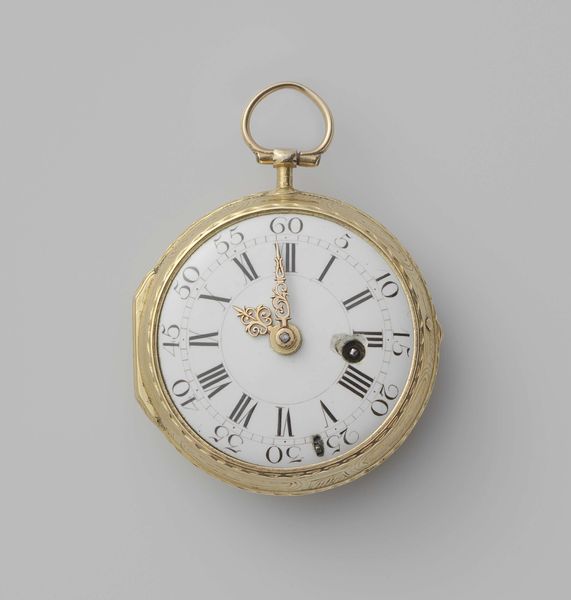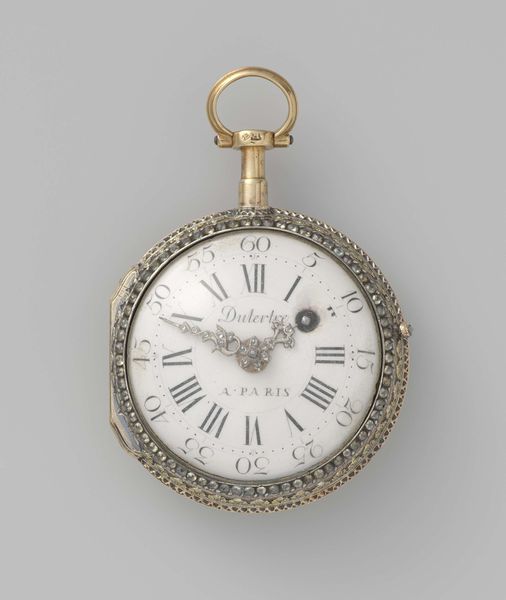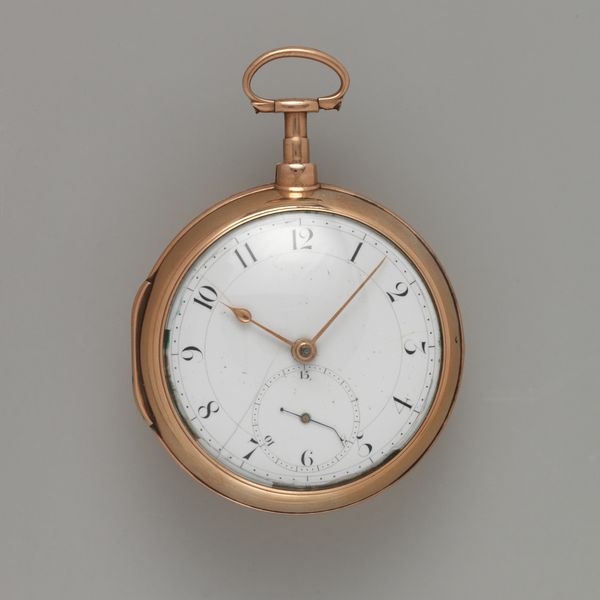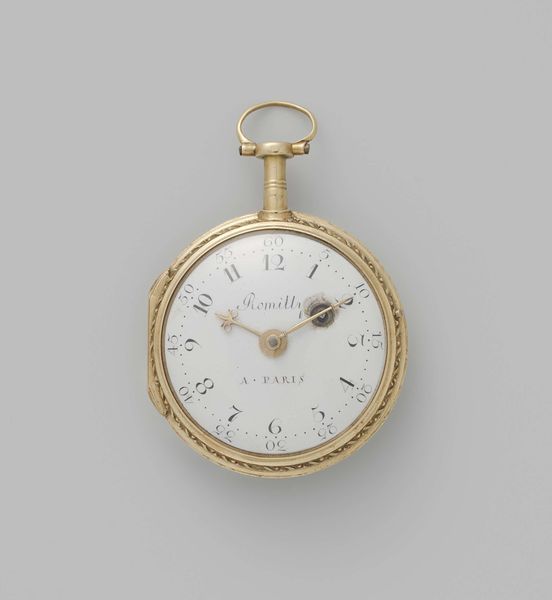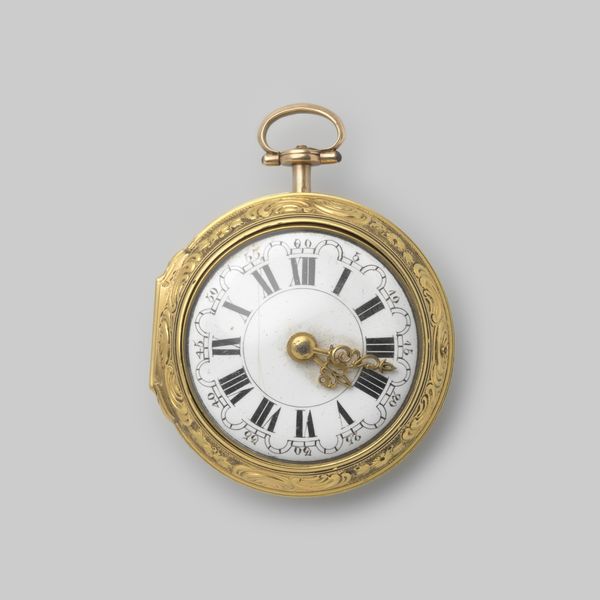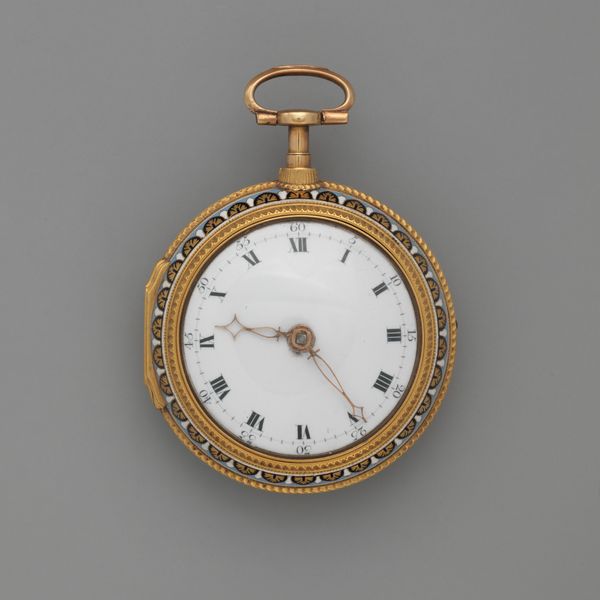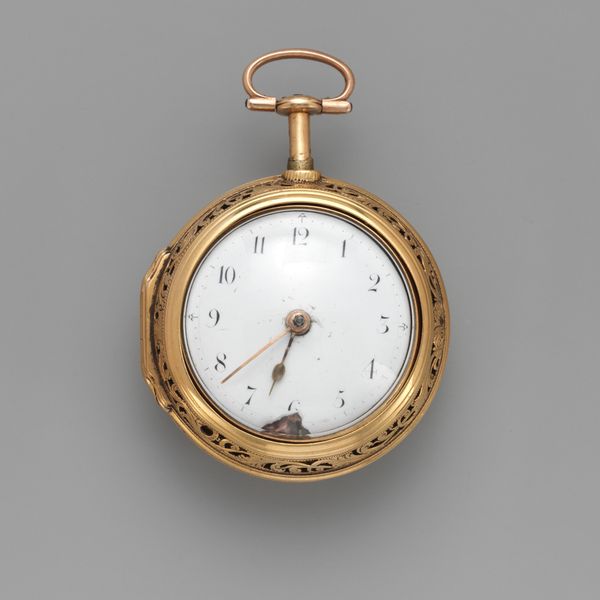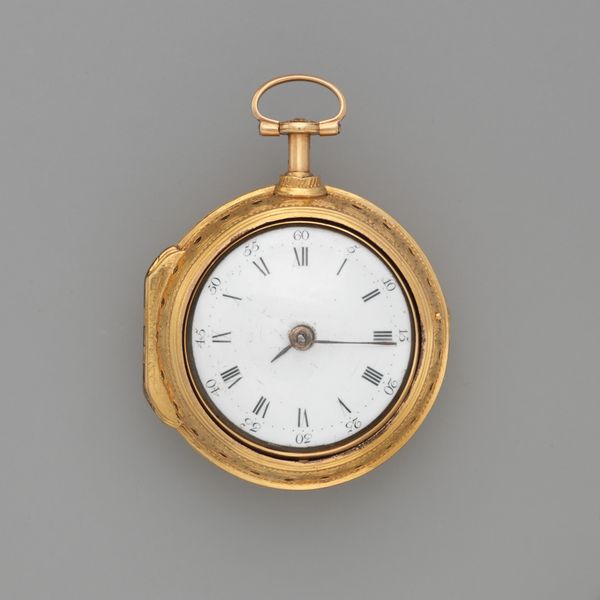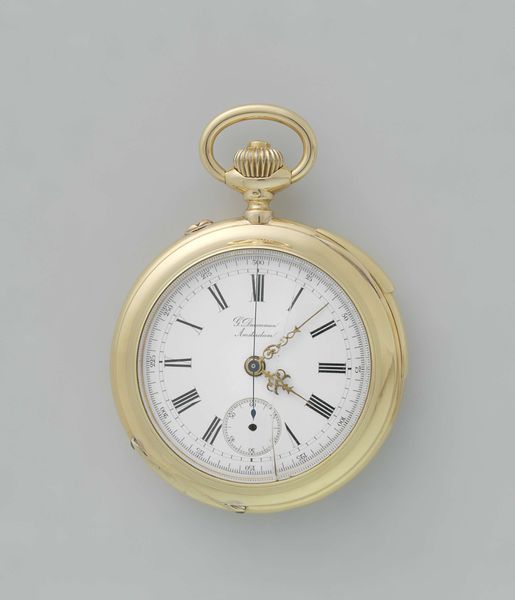
metal, gold
#
metal
#
gold
Copyright: Rijks Museum: Open Domain
Curator: A seemingly simple object, but a universe contained: here we have a gold and metal watch, dating back to somewhere between 1785 and 1790. It's the work of Jean Antoine Lépine, a master of his time. Editor: There's an incredible elegance in its simplicity, isn't there? The face, those delicate numerals, and the encircling pearls exude an almost haunting tranquility. The piece whispers secrets from another age. Curator: Absolutely. Lépine's work transcends mere timekeeping. In a period defined by rigid social hierarchies, such an adornment served not only as a status symbol but as an assertion of one’s place within the swirling dance of society. Every detail, the choice of gold, the precise clockwork, spoke of a certain political power. Editor: It strikes me that time itself must have been perceived so differently then. A watch like this turns time into a tangible treasure, but also an ever-present anxiety. Given the precarity of life at that time, did marking seconds and minutes intensify one's relationship with death? Curator: Perhaps. In the 18th century, marking time wasn't simply about scheduling, it was also a meditation on mortality, power and the fragility of human existence. Editor: When considering how meticulously crafted such an item would be, what processes would have been employed to create these miniature artworks and how easily were they repaired when worn in close proximity to the body? Curator: Well, remember these pieces would have been produced through intensive hand manufacture from initial design, assembly, engraving and polishing. Their repair could often surpass their cost with repeat attendance by highly skilled metalworkers essential to keeping them operational. A small inconvenience and large privilege of being the keeper of time itself. Editor: It's humbling to reflect on how something so compact held so much societal meaning. This timepiece makes me question how will our current relationship with digital screens marking every moment, every location, be viewed hundreds of years from now? Curator: An astute question. Perhaps they’ll say that these devices reflected our obsession with metrics and social connection, trapping us between fleeting status and persistent isolation. Food for thought!
Comments
rijksmuseum about 2 years ago
⋮
When spare shapes and ornaments became fashionable in the late 18th century, French watchcase makers began making plainer looking, yet highly refined cases. Thanks to the pearls and the floral motifs in opaque enamel, this case is far from dull. They complement the starburst pattern, which was made with a so-called guilloche machine. The translucent enamel applied over this design creates a sparkling effect.
Join the conversation
Join millions of artists and users on Artera today and experience the ultimate creative platform.
